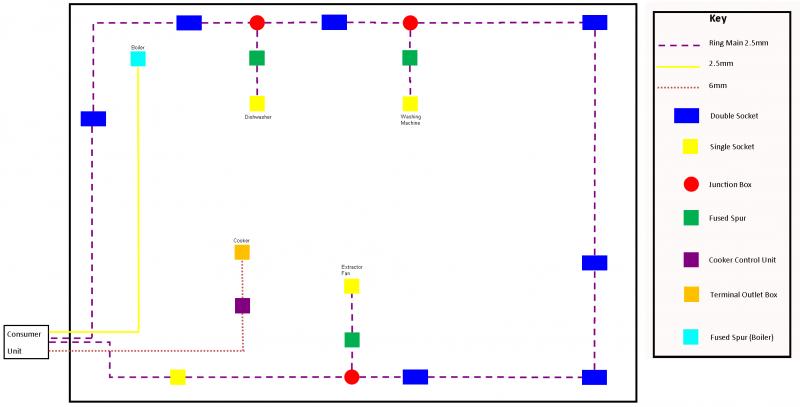T
TomBridges
Hello everybody
We are planning on a new kitchen.. having drawn up an outline of what cupboards we are going to have, I have knocked together an outline of the electrics needed.
Basically I have a couple of questions:
1) Can all the appliances be put on the Ring Main? (As you can see from the diagram the Dishwasher, Washing Machine & Cooker Hood/Extractor Fan are protected by Fused Spurs.) I was wondering if I should have them on their own circuit? It seems like a lot of appliances/sockets for a 2.5mm 30amp circuit.
2) Does the cabling need to be shielded? or is it fine just under plaster?
Many Thanks in advance,
Tom
We are planning on a new kitchen.. having drawn up an outline of what cupboards we are going to have, I have knocked together an outline of the electrics needed.
Untitled
- TomBridges
- 2
Basically I have a couple of questions:
1) Can all the appliances be put on the Ring Main? (As you can see from the diagram the Dishwasher, Washing Machine & Cooker Hood/Extractor Fan are protected by Fused Spurs.) I was wondering if I should have them on their own circuit? It seems like a lot of appliances/sockets for a 2.5mm 30amp circuit.
2) Does the cabling need to be shielded? or is it fine just under plaster?
Many Thanks in advance,
Tom


